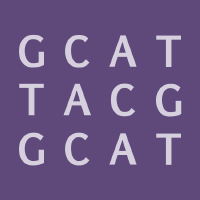Topic Menu
► Topic MenuTopic Editors



Bioinformatics in Drug Design and Discovery
Topic Information
Dear Colleagues,
With the development of modern sequencing technology, this decade has witnessed huge biomedical data advances, which have opened a new window for clinical diagnoses and therapeutics of complex disease. Bioinformatics can extract, analyze, and communicate hidden information from sequences and structures as well as functional knowledge of nucleic acids and proteins in order to discover and identify new drug targets. This can potentially guide the design of therapeutic drugs that can activate or block the biological functions of biomolecules and help to construct various prediction models to aid virtual bioactive screening. This will, in turn, help to design and discover safer and more efficient therapeutic drugs that can either activate or block the biological functions of biomolecules. Thus, there is a need to fundamentally address all the above-mentioned issues in the application of bioinformatics techniques and the development of novel drugs. Here, we seek original research papers and reviews for a interdisciplinary Topic on the theme of bioinformatics in drug design and discovery.
Dr. Bing Niu
Dr. Pufeng Du
Dr. Suren Rao. Sooranna
Topic Editors
Keywords
- machine learning
- molecule simulation
- deep learning
- sequencing analysis
- drug-target interaction
- virtual screening
- de novo drug design
- benchmark databases
- big data
- artificially intelligent techniques
- pharmacophore technology
- quantitative structure-activity relationships
Participating Journals
| Journal Name | Impact Factor | CiteScore | Launched Year | First Decision (median) | APC |
|---|---|---|---|---|---|

Biomolecules
|
4.8 | 9.4 | 2011 | 18.4 Days | CHF 2700 |

Genes
|
2.8 | 5.2 | 2010 | 14.9 Days | CHF 2600 |

International Journal of Molecular Sciences
|
4.9 | 8.1 | 2000 | 16.8 Days | CHF 2900 |

Marine Drugs
|
4.9 | 9.6 | 2003 | 13.7 Days | CHF 2900 |

Scientia Pharmaceutica
|
2.3 | 4.6 | 1930 | 26.1 Days | CHF 1000 |

Molecules
|
4.2 | 7.4 | 1996 | 15.1 Days | CHF 2700 |

Journal of Clinical Medicine
|
3.0 | 5.7 | 2012 | 16 Days | CHF 2600 |

Preprints.org is a multidisciplinary platform offering a preprint service designed to facilitate the early sharing of your research. It supports and empowers your research journey from the very beginning.
MDPI Topics is collaborating with Preprints.org and has established a direct connection between MDPI journals and the platform. Authors are encouraged to take advantage of this opportunity by posting their preprints at Preprints.org prior to publication:
- Share your research immediately: disseminate your ideas prior to publication and establish priority for your work.
- Safeguard your intellectual contribution: Protect your ideas with a time-stamped preprint that serves as proof of your research timeline.
- Boost visibility and impact: Increase the reach and influence of your research by making it accessible to a global audience.
- Gain early feedback: Receive valuable input and insights from peers before submitting to a journal.
- Ensure broad indexing: Web of Science (Preprint Citation Index), Google Scholar, Crossref, SHARE, PrePubMed, Scilit and Europe PMC.

